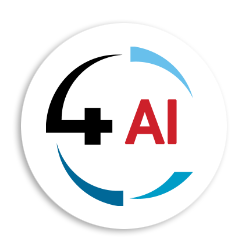Blog
Measuring ROI of AI Adoption: Metrics that Matter for Copilot, Agents, and Modernization

AI is everywhere right now. You can’t scroll through LinkedIn without someone talking about Copilot, custom agents, or how they’re “modernizing” with the cloud. The excitement is real, but let’s be honest-when it comes to adoption, the big question every leader eventually asks is: “What’s the return on investment?”
It’s a fair question. Fancy demos are great, but businesses don’t run on hype-they run on numbers. So how do you actually measure the ROI of AI adoption? What are the metrics that matter when you’re rolling out Copilot, building agents, or rethinking processes with modernization in mind? Let’s dig in.
Why ROI is tricky with AI
Here’s the thing-measuring ROI on AI isn’t always straightforward. When you implement a new CRM system, you can track new leads or higher close rates. With AI, the benefits can be more subtle at first.
For example, Copilot might save your team 10 minutes per email draft. That’s not going to look life-changing on a spreadsheet. But multiply that across hundreds of emails, across dozens of people, over months-that’s a massive productivity gain.
So part of the challenge is zooming out. You’ve got to connect the small wins to the bigger business outcomes.
Metric 1: Time Saved (and How It Adds Up)
Let’s start with the obvious one-time.
Copilot in Microsoft 365 or Dynamics 365 often cuts down repetitive tasks like drafting, summarizing, or scheduling. Agents built in Copilot Studio can automate workflows that used to take hours.
One company I worked with estimated their sales team saved about 6 hours per week just by using Copilot to prepare for meetings and update CRM notes. That’s almost a full workday.
Now, here’s where it gets interesting: if each salesperson is worth, say, $100 per hour in value, and you’ve got 50 of them, those “small” time savings quickly translate into real financial impact.
Ask yourself: are you actually measuring the hours saved, or are those wins just staying as anecdotes?
Metric 2: Employee Productivity & Focus
Time saved is great, but what employees do with that time matters more.
This is where productivity metrics come in. Look at things like:
- More customer meetings per week.
- Faster turnaround on service tickets.
- Higher output of proposals or campaigns.
In one case, a customer service team using Copilot reduced their average response time by 25%. Not only were agents less stressed, but customer satisfaction scores went up too. That’s ROI that goes beyond cost savings-it strengthens your brand.
Metric 3: Quality Improvements
Here’s something that’s often overlooked: AI doesn’t just make things faster-it can make them better.
Think about AI-powered drafting. Sure, Copilot helps you reply quickly, but it also reduces errors, catches tone issues, and ensures consistency. That’s quality improvement.
Or take modernization efforts. When you integrate AI with data platforms like Microsoft Fabric, the insights aren’t just faster-they’re sharper. Decision-makers suddenly have richer, more accurate data at their fingertips.
So, when measuring ROI, don’t just ask, “How much quicker are we?” Also ask, “How much better is the output?”
Metric 4: Adoption & Usage
Here’s a personal take: you can’t measure ROI on AI unless people actually use it.
I’ve seen organizations invest heavily in Copilot licenses, only to discover months later that half their staff barely touch it. That’s not an ROI problem-it’s an adoption problem.
So track usage metrics:
- How many employees are actively using Copilot daily?
- Which departments are leaning on agents the most?
- How often are modernized workflows actually being used instead of old workarounds?
If adoption is low, the ROI will never show up. Sometimes the fix is as simple as training, change management, or showcasing early wins.
Metric 5: Customer Outcomes
This is where ROI really shines-when you connect AI adoption to customer-facing results.
Think about it: faster proposals mean customers get answers sooner. Smarter service agents mean customers resolve issues faster. Modernized systems mean customers enjoy smoother digital experiences.
I worked with a retail client who introduced an AI agent for handling product inquiries online. Not only did it reduce call center volume by 30%, but customer satisfaction ratings went up by double digits. That’s ROI you can take to the boardroom.
Metric 6: Cost Avoidance & Risk Reduction
AI isn’t just about making money-it’s about avoiding losses.
For example, AI can flag compliance risks, highlight data anomalies, or prevent errors before they snowball into bigger problems. That’s cost avoidance.
Modernization projects, especially in cloud environments, also cut infrastructure and maintenance costs. Instead of paying for outdated servers and manual upkeep, you shift to scalable, efficient platforms.
These savings might not be as flashy as “new revenue,” but they’re just as important in the ROI conversation.
A Personal Reflection
When I first started looking at AI ROI, I made the mistake of chasing only the big, dramatic metrics-new revenue, huge cost cuts, big customer growth. But over time, I realized the real story is in the smaller, cumulative wins.
It’s the 10% faster service response that improves customer loyalty. The 15 minutes saved here and there that frees up whole days. The employees who feel empowered because they can focus on the work that actually matters.
These aren’t just numbers on a dashboard-they’re the building blocks of long-term competitive advantage.
Pulling it Together
So, what’s the recipe for measuring ROI of AI adoption? It’s a mix:
- Time Saved → Productivity gains.
- Employee Productivity & Focus → Higher output, less burnout.
- Quality Improvements → Better outputs, fewer errors.
- Adoption & Usage → Real engagement, not shelfware.
- Customer Outcomes → Faster, smarter, happier customers.
- Cost Avoidance & Risk Reduction → Protection against losses.
Each of these tells part of the story. Together, they paint the full picture.
Final Thoughts
At the end of the day, ROI in AI adoption isn’t just about dollars-it’s about transformation. The companies that will win with Copilot, agents, and modernization aren’t just the ones who buy the licenses. They’re the ones who measure, learn, and refine until the value becomes undeniable.
So, here’s the question I’ll leave you with: when you look at your own AI adoption, are you only counting the costs-or are you capturing the true, layered value that AI brings?
Because if you’re not measuring it, you might already be missing it.
For more information please feel free to contactc us at This email address is being protected from spambots. You need JavaScript enabled to view it.


